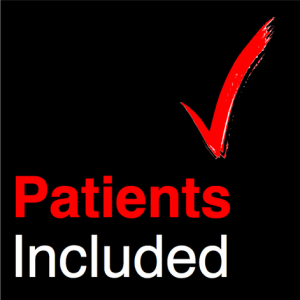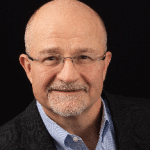 What is the role of the patient?
What is the role of the patient?
As we noted in April, TEDMED and the Robert Wood Johnson Foundation have designated “The Role of the Patient” as one of the twenty TEDMED Great Challenges for 2013, and the TEDMED site will host a big conversation about it in the coming months, seeking input from all over. In the Great Challenges voting, Role of the Patient placed third, and its cousin The Caregiver Crisis placed second.
Both issues affect patients and families daily, and will increasingly affect providers in the US as the Affordable Care Act rolls out. We’ve heard from SPM members in other countries that both issues are big for them, too.
As a first step toward those discussions, I’d like input from participatory thinkers for a retreat this Sunday through Tuesday. It’s the annual Forum of the ABIM Foundation; I’m attending as a representative of the Society for Participatory Medicine, and this year’s topic is especially amenable to our input. This post will provide context and invite comments from all over.
About the ABIM Foundation
The American Board of Internal Medicine is one of the two major groups who certify internal medicine physicians. Its Foundation is a separate organization devoted to medical professionalism. The Foundation’s most visible public outreach was this year’s “Choosing Wisely” campaign. From the Foundation’s site:
On April 4, the ABIM Foundation, along with nine medical specialty societies and Consumer Reports, formally launched the Choosing Wisely® campaign. Participating specialty societies each identified “Five Things Physicians and Patients Should Question” to help spark conversations between physicians and patients about the need —or lack thereof— for many frequently ordered tests or treatments.
About this forum:
The theme is “Choosing Wisely in an Era of Limited Resources.” From a post by the Foundation’s Daniel Wolfson:
At the 2012 ABIM Foundation Forum, 140 health care system leaders, consumers, physician leaders – both in practice and academic medicine, researchers, medical students and residents, payers and purchasers will gather to explore how to accelerate changes to improve delivery of care, with special consideration given to the increasing number of Americans entering the system.
Several innovations in the public and private sector are already underway and should stimulate the conversations at the Forum, including:
- changes in how services are paid for;
- improvement in the coordination and transition of care;
- engaging patients in shared decision-making; and
- capitalization and redesign of primary care.
Outcomes:
At the Forum, participants will not only identify potential solutions to the problem of rising costs, they will also identify barriers to implementing change in health care delivery systems …
Included in the list of obstacles is:
- patients and consumers are often not involved in the design of changes. When redesign is not patient-centered and without being involved, the public rejects those changes.
Thank goodness! I hardly ever hear this mentioned at conferences, but in what other industry would it be a surprise that consumers are less interested in something that was designed without them??
And that, ladies and gents, is where you come in. What do you want to see? None of us can have everything – limited resources – so what do you feel is wise? Speak up in the comments.
Logistics:
Sessions start Sunday morning (8 a.m. PDT) and go through Tuesday morning. The group size is big enough to include many perspectives but small enough to maintain a sense of intimacy and connectedness.
Seating is assigned(!) each day – last year, on the morning I found out I couldn’t get health insurance in New Hampshire, I was assigned to sit next to Don Berwick, head of Medicare, and he gave me the URL for the N.H. high-risk pool. Sweet.:-)
Following on Twitter:
I don’t know how active the Twitter feed will be – they welcome tweeting at hashtag #ABIMF2012, but my experience is that when there’s a lot of intense thinking going on, it’s hard to tweet in real time. In any case, follow the feed by searching #ABIMF2012 on Twitter.com, or these sites:
- Symplur’s Healthcare Hashtags project: http://www.symplur.
com/healthcare-hashtags/ abimf2012/ - Tweetchat.com (live, real-time streaming): http://tweetchat.
com/room/abimf2012 - The Foundation’s Twitter ID is @ABIMFoundation.
Patients Included
 This event gets Lucien Engelen’s “Patients Included” checkmark for including these patients:
This event gets Lucien Engelen’s “Patients Included” checkmark for including these patients:
- Meg Gaines, ovarian cancer survivor and Director of The Center for Patient Partnerships, U of Wisconsin-Madison
- Mark Gorman, Silver Springs MD
- me
Patient advocates include
- Michelle Rhee, Manager of Program Initiatives, National Brain Tumor Society
- Louis Colbert, Delaware County Office of Services for the Aging
Conspicuous other patient/consumer-oriented participants include:
- Jim Guest, President & CEO, Consumer Reports
- Debra Ness, President, National Partnership for Women and Families
- John Rother, President & Chief Executive Officer, National Coalition on Health Care
What do you think?
It’s crunchtime in American health care, folks: as Aetna CEO Mark Bertolini said in his talk at the big HIMSS health IT conference, the Affordable Care Act means everyone’s revenues will be dropping, and any firm that wants to still have margins will need to find new efficiencies.
Here at the Society for Participatory Medicine, we firmly believe – we know – one solution: let patients help heal healthcare. In a time of tough choices, it only makes sense to engage consumers in deciding what’s important. And if we don’t, other parties will, and without our input they won’t have a chance of knowing what we want.
So what do you want? What solutions can you propose? And what obstacles to change do you see?
Feel free to spread this request to every other participatory organization you know, too. They can blog their answers on their own site, if they want, and drop a link here so we know where to find them. Participate!






As a social worker who spent a career as a member of multi-disciplinary health care teams, I can tell you
that the model exists for greater inclusion of patients
and cost-saving reallocation of provider time.
Medical practices need to have team members who advocate
for patients and facilitate communication between
providers and patients. Secretaries and receptionists
can’t do it well. Medical people need to do the medical piece.
Social Workers and advocates need to be incorporated
in routine practice of health care. It reduces costs.
One of the first things I would do after thanking them is
1)challenge the assumption that this is a “time of limited resources” when we spend the highest % of GNP of any industrialized country on health care.
2) I would also challenge the assumption that millions of Americans are entering the system.. They are not widgets sitting on a shelf – they are already in the health care system (many people cycle on and off of insurance each year and the others still get care it just is difficult to access and pay for). 1 in 3 residents in Colorado for example lack health insurance.
What I want is a resources devoted to systems level design – not simply asking patients via focus groups. When apple designs a new product they have engineers, marketing people, financial experts who create a new product that they then test against us to see if it meets out needs.
Patient centered doesn’t mean that there is a volunteer class of people who travel the country giving free advice nor even the few paid speakers (YEAH DAVE!) but full time paid positions of highly trained experts in policy, technology and patient centered design.
Hi Sherry – quick response as the meeting ends –
Agreed re “limited resources.” Of course the context at this meeting is that the world of people who plan healthcare has never been forced to hear “You can’t spend that much anymore,” and of course the Patient Protection & Affordable Care Act is bringing that to an end.
Re full time paid positions of highly trained experts – anyone in the mirror seem qualified? :-) You should be one!